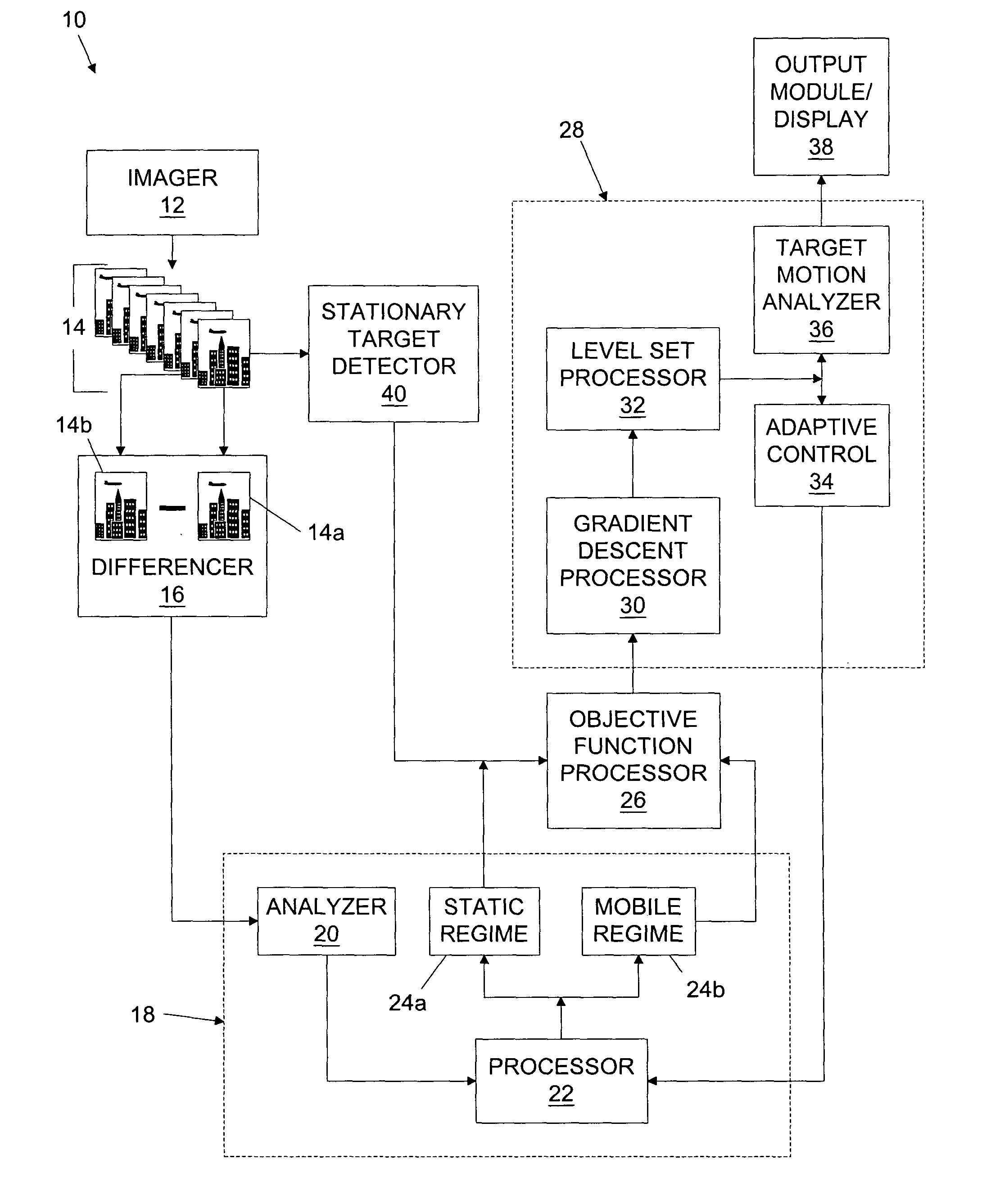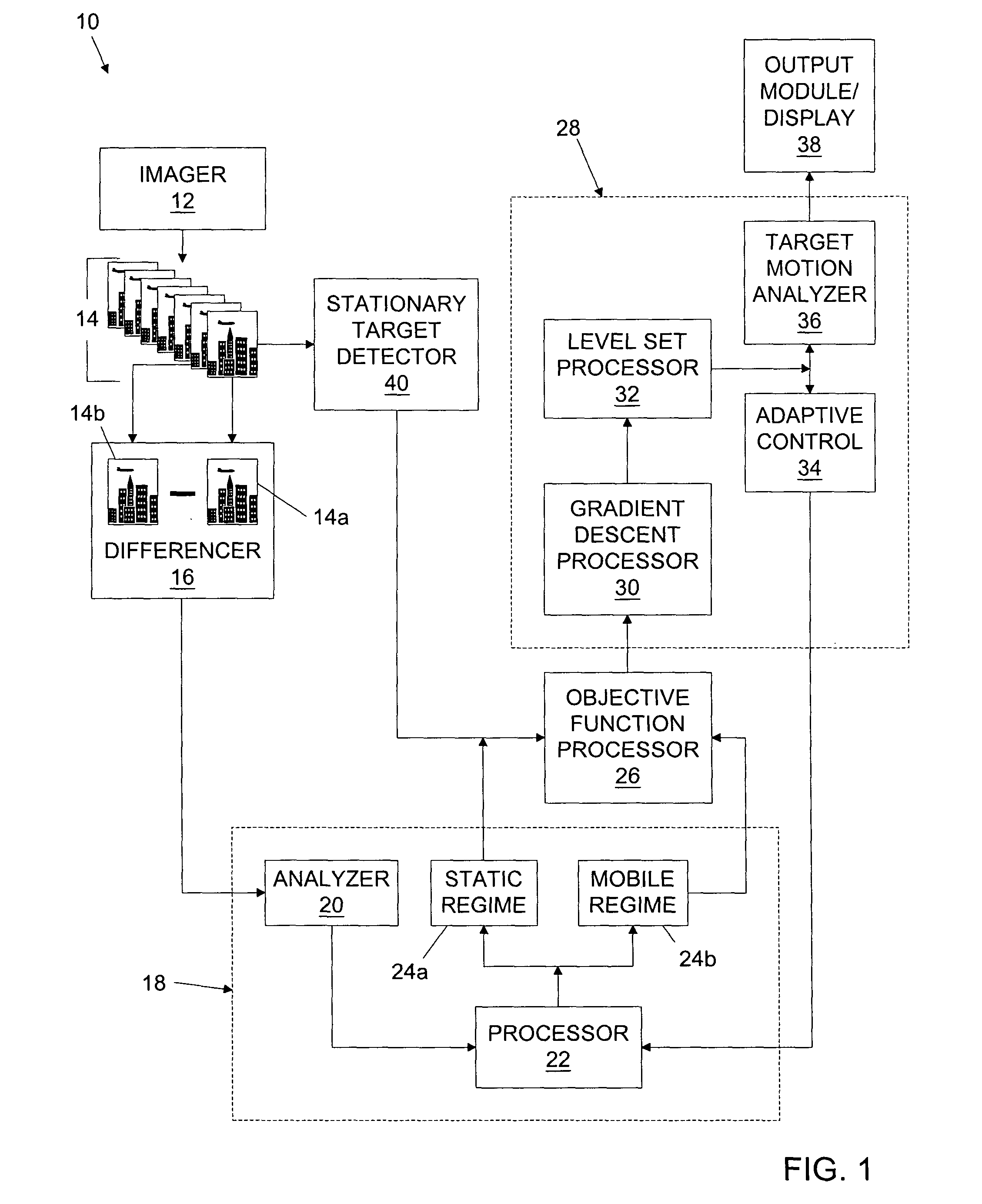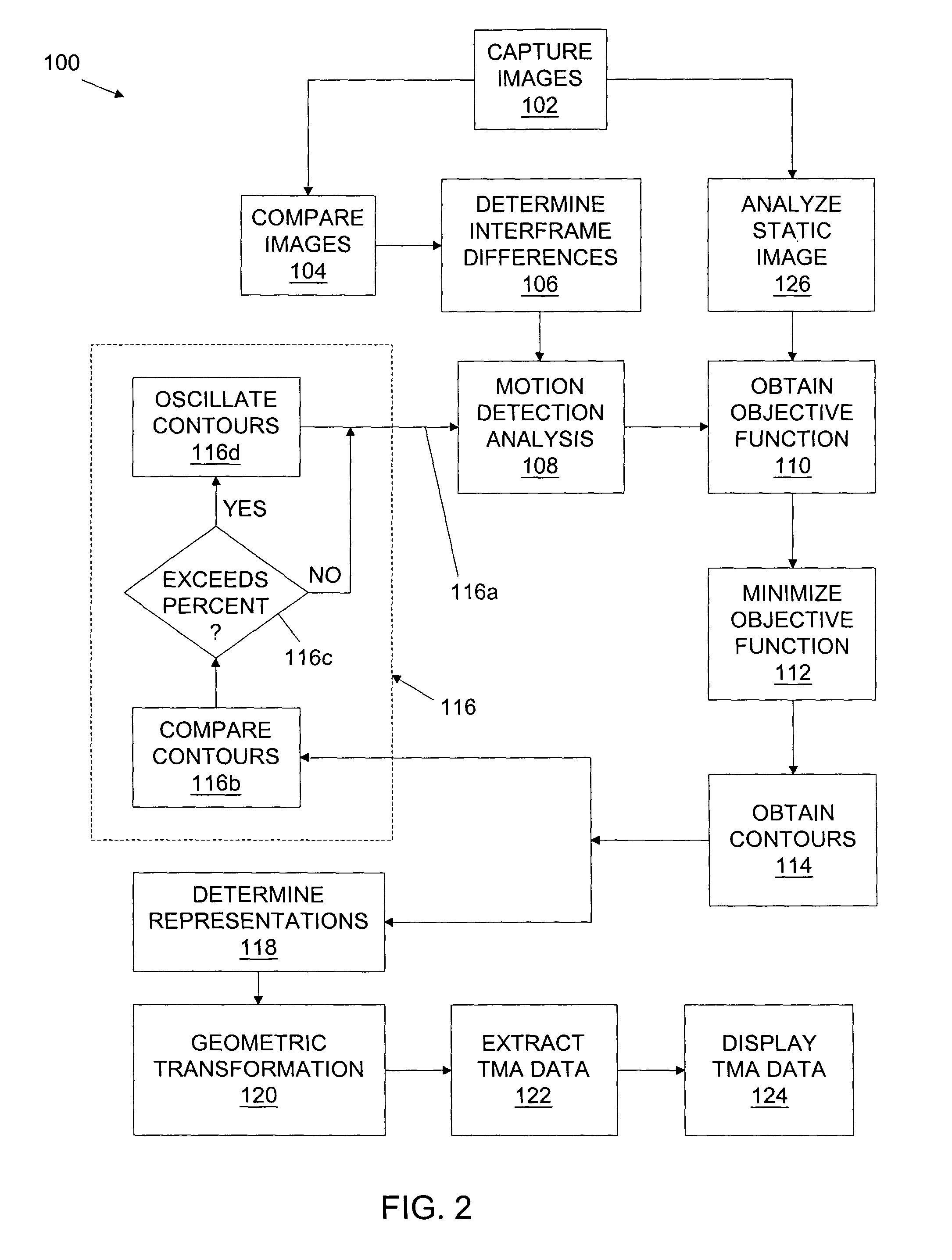Automatic target detection and motion analysis from image data
a technology of image data and automatic target detection, applied in the field of automatic target detection and tracking using video data, can solve the problems of presenting a difficult and challenging image processing problem, excessive constraints, and amplification of detection and tracking difficulties
- Summary
- Abstract
- Description
- Claims
- Application Information
AI Technical Summary
Benefits of technology
Problems solved by technology
Method used
Image
Examples
Embodiment Construction
[0024]Referring to FIG. 1, a block diagram of a detection / tracking system 10 is shown. The methodology for the detection / tracking system 10 can be based on a variational framework for detecting and tracking multiple moving targets in image sequences. An imager 12 provides sequential images 14 of a scene in which objects of interest may be located. In one embodiment, the imager 12 can be a video feed. Other means of providing sequential images of the scene can be used, e.g., digital cameras or capturing frames from a television signal.
[0025]Differencer 16 can compare sequential pairs of images (e.g., 14a, 14b) and calculates the interframe difference. The interframe difference can be provided to the feature boundary detection module 18, which can use a Bayesian model analyzer 20 to obtain an interframe difference density function. Processor 22 can partition the interframe difference density function into static and mobile regimes, 24a, 24b, which can be provided to objective function...
PUM
 Login to View More
Login to View More Abstract
Description
Claims
Application Information
 Login to View More
Login to View More - R&D
- Intellectual Property
- Life Sciences
- Materials
- Tech Scout
- Unparalleled Data Quality
- Higher Quality Content
- 60% Fewer Hallucinations
Browse by: Latest US Patents, China's latest patents, Technical Efficacy Thesaurus, Application Domain, Technology Topic, Popular Technical Reports.
© 2025 PatSnap. All rights reserved.Legal|Privacy policy|Modern Slavery Act Transparency Statement|Sitemap|About US| Contact US: help@patsnap.com



